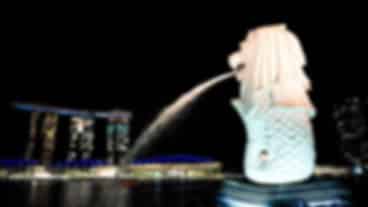Top 4 Prehistoric Cave Paintings in India – An Artistic Guide
Author
Hari Priya
Updated Date
February 10, 2025
Read
5 minutes

India is a treasure trove of cultural heritage that is imbibed in the Indian art. Have you ever been awestruck by the beauty and intricacies of Indian paintings? These are finely engraved paintings that were never known to be art forms in those times. The lives of the ancient civilisations can be understood to an extent through these paintings. Most of these paintings are about their beliefs, age-old rituals, and relationships with nature. If you are someone interested in Indian cultural art, you must visit these caves that never fail to amaze anyone.
Top 4 prehistoric cave paintings
- Ajanta Cave paintings
- Ellora Caves
- Elephanta Caves
- Bhimbetka caves
Checkout: India’s Heritage Arts and Crafts
Ajanta Cave paintings
Ajanta Caves has the oldest Indian paintings. Interestingly, these paintings were made around the 1st century BC. Interestingly, the Ajanta cave was built in two phases. One around the 2nd century BC and the other around 400-650 BC. Buddhism sprang in the Indian context, and the Ajanta caves, situated about 100 km from Aurangabad, remain to substantiate the same. The portraits owe their life primarily to the Mahayana sector of Buddhism. Buddha’s life is depicted in the form of various images, drawings, and other artistic depictions. They are universally called the masterpieces of Buddhist art.

Ellora Caves
Ellora is a very well-known UNESCO World Heritage site, which is located in Maharashtra. There are almost 100 caves at the site, all excavated from the basalt cliffs of Chandigarh, out of which only 34 are open to the public. In addition, it is one of the world’s largest rock-cut monastery caves, which features the Hindu, Buddhist, and Jain temples and artworks that date back to the 600–1000 CE period.
You would not want to miss the famous Kailasha, or Kailasanatha, the largest of the rock-cut Hindu temples at the Ellora caves. Due to its size, architecture, and sculptural treatment, it is considered one of the most remarkable cave temples in the world. These are the above reasons why the Ellora Caves top the list of the top 4 cave paintings in India.

Elephanta Caves
These caves are located in the Elephanta Islands of Maharashtra. The colonial Portuguese named it Elefante—morphed to Elephanta after they found elephant sculptures on the island. The paintings were made in the 8th century and are very impressive in detail. It is a collection of various cave temples, predominantly dedicated to the Hindu god, Shiva. Today, several people hire ferries from the Mumbai coast to reach the island and, after a few minutes of trekking, get to explore the cave lined with brightly coloured paintings.

Bhimbetka caves
The word Bhimbetka, derived from Bhimbhatika, was named after Bhima, one of the five Pandavas from the Mahabharata. This cave is found in Bhopal, dating back to 12,700 BC or earlier. It exhibits the earliest traces of human life. It shows the paintings and drawings of wild animals such as bison, tigers, elephants, rhinoceroses, and many more.
This cave community has over 600 separate caves, which were primarily shelters. The most frequently used colours in the art are red and white. The oldest painting in this region is around 12000 years old. Ceiling decoration in one of the caves is the greatest aspect of the entire community of caves. The ceiling is quite high, and yet the prehistoric man found a tool to raise him up.
Love to discover Indian history and architecture? Well, then quickly log on to Pickyourtrail.com and have a look at the available packages.

FAQs
What are the major prehistoric sites in India?
There are two important sites in India that are famous for cave paintings, namely the Bhimbetka Caves in Amarnath and the Jogimara Caves in Madhya Pradesh.
Which is the most famous prehistoric site?
The most famous prehistoric site in the world is Stonehenge.
Who is the father of rock painting?
Vishnu Shridhar Wakankar is the father of rock painting, and he is also the person who found the rock paintings of Bhimbetka caves.
Which is the first prehistoric painting?
The Altamira cave paintings located in Spain are the first prehistoric paintings in the world.
Who discovered rock paintings in India first?
Archibold Carlleyle, who was an archaeologist, made the discovery of rock paintings in India in the years 1867-68.
You could step into the realm of the ancient civilisations as you get into the caves. The architecture and rock paintings are definitely going to give you some worthwhile memories. If you are into historic architecture and artistic spots, you can scroll through the international tour packages from Pickyourtrail to find destinations for your upcoming travel plans. Satiate your curiosity about these ancient paintings and gain unbelievable knowledge!
Recommended articles for you
Discover Packages


Need help in planning?
Talk to our Travel Experts






























